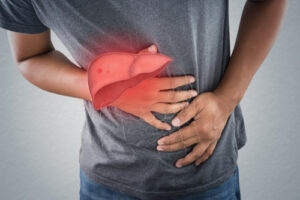Ghee is a source of saturated fat, and its impact on liver health depends on the individual’s overall dietary context. A well-balanced diet, rich in essential nutrients, is generally recommended for liver health. Alcohol-related liver injury is a serious medical condition, and dietary interventions should be guided by evidence-based practices. The primary focus in managing liver diseases often involves alcohol cessation, a well-balanced diet, and medical supervision.
Now, the question arises whether ghee improves survival rates in such cases.
Talking about this, Dr. Chetan Kalal, who is a Program Director – Liver, Pancreas and Intestine Transplantation at Nanavati Max Super Speciality Hospital, Mumbai said, “While there is no conclusive evidence supporting the idea that adding ghee specifically improves survival in individuals with severe alcohol-related liver injury and jaundice, it’s crucial to approach such claims with caution. The focus in managing liver conditions, especially those related to alcohol consumption, should primarily involve abstinence from alcohol, a balanced and nutritious diet, and medical supervision.”
“Incorporating healthy fats from sources like avocados, nuts, and olive oil might be more advisable than relying solely on ghee,” he added.
Speaking on the same lines, Dr. Santosh Pandey, who is an Acupuncturist and Naturopath at Rejua Energy Center, Mumbai said, “There is limited scientific evidence to support the notion that adding ghee (clarified butter) to the diet can improve survival for individuals with jaundice due to severe alcohol-related liver injury. While ghee contains certain fatty acids that may be beneficial for liver health, the overall impact on survival in such cases remains inconclusive.”

Other Alternatives:
The use of ghee in jaundice due to alcohol-related liver issues is a nuanced matter. Dietician Garima Goyal said, “Ghee is clarified butter rich in saturated fats. As you might be aware, ghee is known for its hypercholesterolemic properties.”
She went on to mention the following:
-
- On the contrary, Medium chain triglycerides (MCTs) are better than ghee when comes the case of jaundice induced by heavy alcohol consumption.
-
- MCTs are known for being easily absorbed and metabolized, potentially providing a quicker energy source that places less strain on the liver.
-
- While both MCT and ghee may offer energy, the suitability depends on the specific health condition, dietary needs, and medical advice.
Ghee Vs MCT:
Here is a list of advantages and disadvantages that each of this fat source provides –
Medium-Chain Triglycerides (MCT)
1. Quick Energy Source – MCTs provide rapid energy, crucial for individuals with compromised liver function.
2. Potential Weight Management – In moderation, MCTs may aid those with weight concerns often associated with liver diseases.
3. Easy Digestion – MCTs are easier to digest, potentially reducing gastrointestinal stress in individuals with liver issues.
4. Enhanced Ketone Production – Increased ketone production from MCTs may offer an alternative energy source for the liver.
5. Brain Health – Ketones produced from MCTs might support cognitive function, which can be affected in liver diseases.
1. Caloric Density – Excessive MCT intake may contribute to a calorie surplus, which could be a concern for those needing careful caloric management.
2. Gastrointestinal Distress – Some individuals may experience digestive issues, a consideration in individuals with compromised liver and digestive function.
3. Limited Nutrient Profile – While a good energy source, MCTs lack the comprehensive nutrient profile found in whole foods that support overall health.
4. Taste and Texture – Pure MCT oil might have a less palatable taste and texture, potentially affecting dietary adherence.
5. Expense – Cost considerations might be relevant, especially if MCT oil is relatively expensive.

Ghee:
1. Rich Flavour – Ghee can enhance the taste of meals, potentially improving the palatability of a liver-friendly diet.
2. High Smoke Point – Suitable for high-temperature cooking, offering versatility in food preparation.
3. Lactose-Free – Being largely devoid of lactose, ghee can be a well-tolerated fat source for those with potential lactose sensitivities.
4. Source of Fat-Soluble Vitamins – Ghee provides fat-soluble vitamins A, D, and E, supporting nutritional needs in individuals with liver disease.
5. Traditional Culinary Uses – Ghee has been traditionally used in cooking, making it familiar and culturally accepted.
1. Saturated Fat Content – High saturated fat levels in ghee might be a concern for heart health, and moderation is crucial.
2. Caloric Density – Ghee, being calorie-dense, requires careful portion control to avoid excessive calorie intake.
3. Potential for Allergies – Rare cases of dairy allergies could pose a risk, emphasizing the importance of individual tolerance.
4. Limited Nutrient Profile – While providing certain vitamins, ghee does not replace the need for a well-rounded, nutrient-rich diet.
5. Expense – The cost of ghee may be a factor to consider, especially when budget constraints are relevant.
On concluding, she said, “The role of Medium-Chain Triglycerides (MCT) oil or ghee in individuals with jaundice due to alcohol-related liver injury is a topic that lacks extensive scientific consensus. MCTs are metabolised differently than long-chain triglycerides and may provide a more readily available source of energy. Some studies propose that MCTs could be beneficial for liver health by reducing the burden on the liver during metabolism, while others also invest into the fact that ghee in limited quantities is fine. However, it’s crucial to note that research on this specific topic is limited, and the overall dietary management of alcoholic liver jaundice should be approached comprehensively under the guidance of healthcare professionals.”
Check out below Health Tools-
Calculate Your Body Mass Index ( BMI )
Calculate The Age Through Age Calculator
